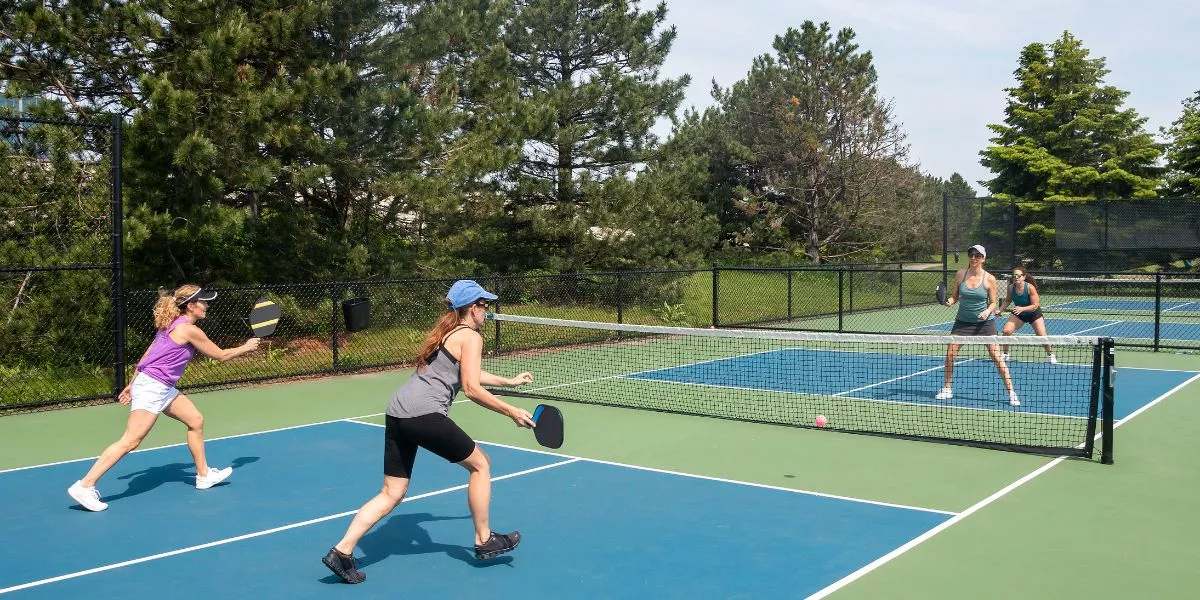
When considering the durability of pickleball nets in comparison to those used in other sports, it's crucial to analyze the materials utilized and how they withstand the rigors of gameplay. While pickleball nets are crafted from sturdy materials like nylon and vinyl, other sports, such as tennis, soccer, and basketball, have their own unique requirements for net durability. Understanding the nuances of net construction and the impact of factors like weather conditions and gameplay intensity can shed light on how pickleball nets stack up against their counterparts in the realm of sports equipment.
Materials Used in Net Construction
When choosing a pickleball net for durability, examining the materials used is crucial. The materials play a significant role in determining the net's overall strength and longevity. Typically, high-quality pickleball nets are constructed using durable materials such as nylon, polyester, or a combination of both. Nylon nets are known for their strength and resistance to wear and tear, making them a popular choice among players looking for longevity in their equipment. Polyester nets are also a reliable option, offering good durability and weather resistance.
Nylon nets, in particular, are favored for their ability to withstand repeated use without fraying or stretching excessively. When comparing different pickleball nets, pay attention to the thickness and quality of the materials used. Thicker materials tend to be more durable and less prone to damage from regular gameplay. Additionally, consider factors like UV resistance, as prolonged exposure to sunlight can weaken certain materials over time. By carefully evaluating the materials used in the construction of a pickleball net, you can ensure that you're investing in a durable and long-lasting piece of equipment.
Factors Affecting Longevity
To ensure the longevity of your pickleball net, what key factors should you consider apart from the materials used in its construction? Proper maintenance is crucial for extending the lifespan of your net. Regularly cleaning the net with mild soap and water can prevent dirt buildup that can weaken the material over time. Additionally, storing the net in a cool, dry place when not in use helps to prevent damage from moisture or extreme temperatures.
Another factor to consider is the quality of the net's hardware. Check that the metal components such as the poles, screws, and tension adjusters are made of durable materials that can withstand repeated use and outdoor conditions. Investing in high-quality hardware may initially cost more but can ultimately save you money by reducing the need for frequent replacements.
Furthermore, how you set up and take down the net can impact its longevity. Avoid dragging the net on the ground or subjecting it to unnecessary strain during assembly. Properly following the manufacturer's instructions for installation and disassembly can prevent premature wear and tear. By considering these factors beyond just the materials used, you can help ensure that your pickleball net remains durable and reliable for many games to come.
Comparison of Wear and Tear
Considering the wear and tear experienced by pickleball nets during use can provide valuable insights into their durability and performance over time. Pickleball nets are subjected to repeated impacts from balls traveling at high speeds, causing stress on the netting material. The constant tension and release during gameplay can lead to stretching and potential weakening of the net over time. Additionally, exposure to various weather conditions like sunlight, rain, and wind can further contribute to wear and tear.
Compared to other sports nets, such as tennis or volleyball, pickleball nets may experience less strain due to the softer pickleball and slower game pace. However, the durability of pickleball nets can still be affected by frequent use and environmental factors. It's essential to regularly inspect pickleball nets for signs of damage, such as fraying or sagging, and address any issues promptly to prolong their lifespan.
Understanding the wear and tear patterns specific to pickleball nets can help players and facility managers make informed decisions regarding maintenance and replacement schedules. By monitoring and addressing wear and tear proactively, pickleball nets can maintain their functionality and performance for an extended period.
Durability Across Different Sports
In comparing durability across different sports, examine how various factors impact the longevity of sports equipment and facilities.
The durability of sports equipment varies depending on the sport and the materials used. For instance, tennis nets are often made of durable materials like polyester or polyethylene to withstand the impact of tennis balls. Soccer goal nets are typically constructed using strong nylon or polypropylene to endure powerful shots and varying weather conditions. Basketball hoops need to withstand repeated dunks and shots, requiring sturdy backboards made of materials like tempered glass or acrylic. In contrast, pickleball nets are designed with materials like nylon or vinyl to provide durability suitable for the nature of the sport.
Factors such as weather exposure, frequency of use, and the intensity of gameplay also contribute to the durability of sports equipment. Outdoor sports equipment may require additional weatherproofing to prevent corrosion or degradation over time. The level of maintenance and care provided to sports equipment can significantly impact its longevity, ensuring that it remains durable for extended periods.




